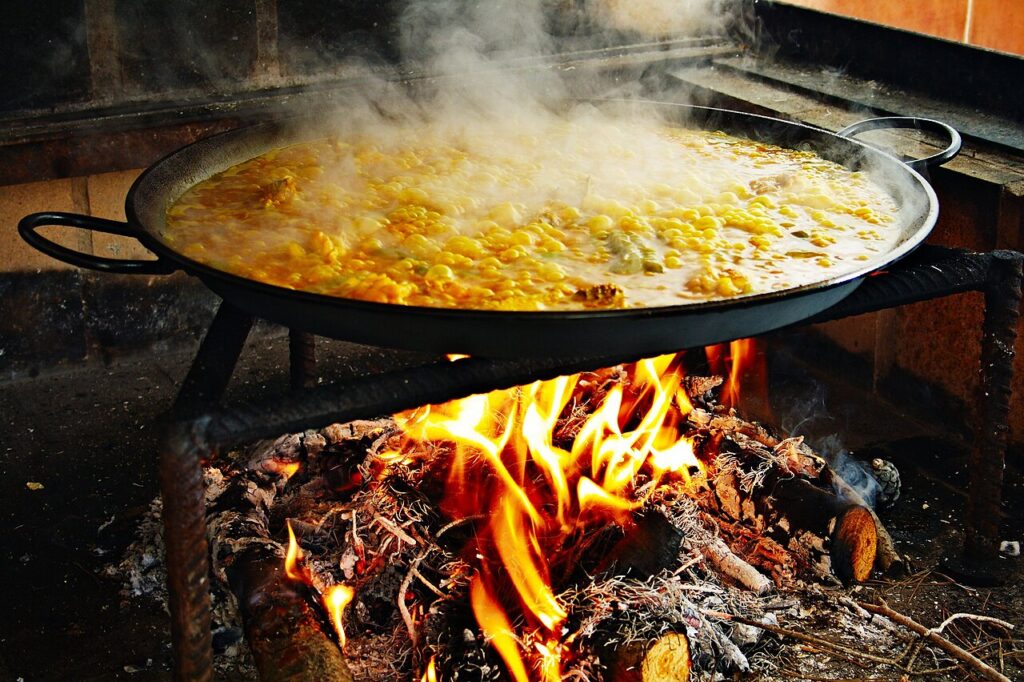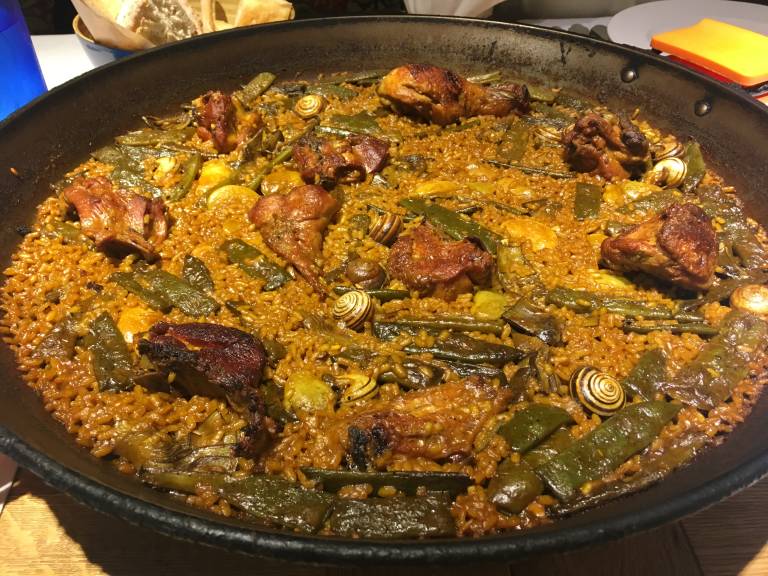Culture
There are always a variety of cultural events Dénia. Besides the festivities and permanent exhibitions in museums, there are many other activities such as music, theater, folkloric dances, literary encounters, historic ceramic exhibitions, sports activities (races, biking, running, marathons, athletism, etc.), food festivals, archeological conferences and children story tellers, among others. To find current cultural events throughout the year, consult the Agenda web page.
The Paella Valenciana belongs to the cultural hetitage of the Valencia region and Spain. The typycal food of the Valencian Community, including Alicante and Dénia is the Paella. Its name is Paella Valenciana that is the traditional paella of the Valencia region, believed to be the original recipe, and consists of round-grain rice, bajoqueta and tavella (varieties of green beans), rabbit, chicken (originally duck), snails, and garrofó (a variety of lima or butter bean), cooked in olive oil and chicken broth. The dish is sometimes seasoned with whole rosemary branches. Traditionally, the yellow color comes from saffron, but turmeric and Calendula can be used as substitutes. Artichoke hearts and stems may be used as seasonal ingredients. Most paella cooks use bomba rice, but a cultivar known as senia is also widely used in the Valencia region. It has to be cooked in a flat pan called paella or paellera, over a fire of orange tree wood. There are lots of orange trees in this region. The layer of rice that remains sticked to the pan is called socarrat and is greatly appreciated by many people.

Paella being cooked over a fire of orange tree wood

The real Paella Valenciana showing all its ingredients
The Fallas (Valenciá: Falles; Spanish: Fallas). It is a traditional celebration held annually in commemoration of Saint Joseph (March 19th in the city of Valencia, Spain, and is an important part of the its cultural heritage. It is also celebrated in many places of the Valencian Community, including Dénia. The main days of celebration are from the 15th to the 19th March, while the Mascletà, a pyrotechnic spectacle of firecrackers detonation, takes place every day since the beginning of March through the19th of March. The term Fallas refers to both the celebration and the Falla monuments burnt during the celebration. These hadcrafted monuments are made during the previous year to the celebration. A number of towns in the Valencian Community have similar celebrations inspired by the original Fallas of Valencia. For example, the bonfires of Alicante. The Fallas festival was added to the list of the UNESCO’s intangible cultural heritage of humanity.

Falla monuments exposed to the public before burning them on March 19th
Thousands of people participate in the festival, wearing the typical Valencian old-style dress and participating in diverse activities. Each neighborhood of the city has an organized group of people, the Casal faller, that works all year long holding fundraising parties and dinners, usually featuring the famous dish paella, a specialty of the region. Each casal faller produces a construction known as a falla, previously mentioned, which is burned the night of March 19th (Nit cremá). There are hundreds of these organizations registered in the Valencian Community that compete in a contest in each city to select the best Falla of the year and elect the Queen of the festivity (Fallera Major). See more detailed information in Festivities.
